Ocean Diagnostics' Team Member Conducts Microplastic Research in Galápagos
Combining Communications and Microplastic Research to Improve Ocean Health
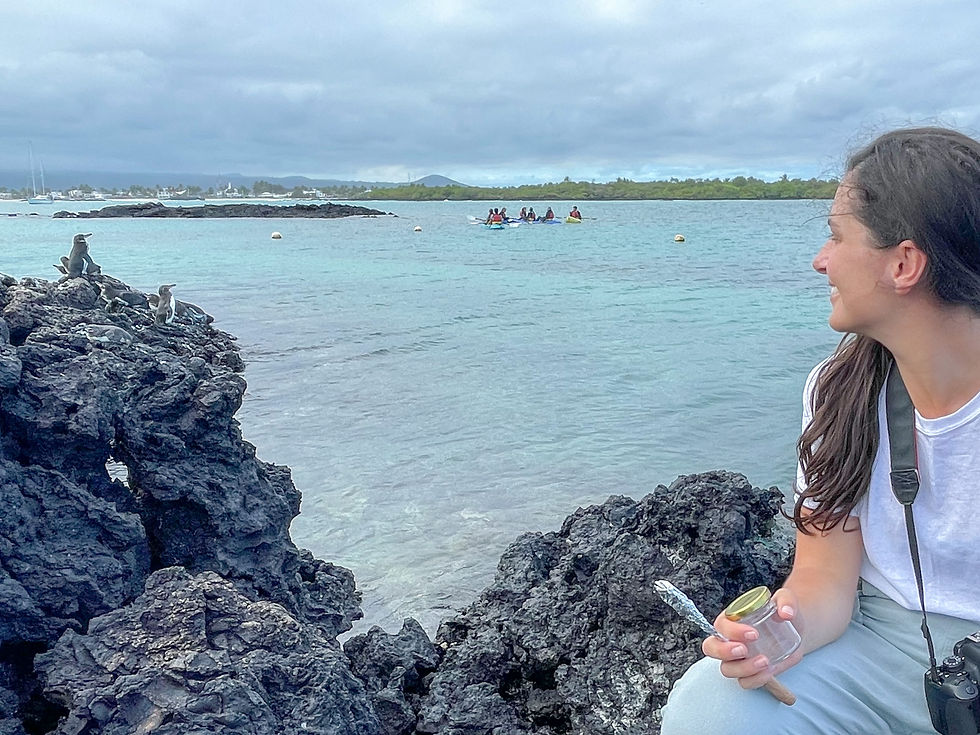
Ocean Diagnostics Inc.’s digital marketing coordinator and UBC master’s student, Karly McMullen, recently returned from studying microplastic pollution in the Galápagos Islands, Ecuador.
Unconventionally equipped with a Bachelor of Arts degree in Communications and Psychology, Karly started a Master of Science program at the Institute for Oceans and Fisheries (IOF) of The University of British Columbia (UBC). Now, Karly works on both fronts: research at UBC and communications at Ocean Diagnostics Inc. to bring accurate data and information on microplastic pollution to the public.
Studying microplastics in a remote oasis, the Galápagos Islands
The Galápagos is a world-renowned destination for ocean lovers, divers, researchers and travellers alike. Historically known as the “Enchanted Islands,” the Galápagos archipelago is home to some of the most unique species in the world, including the Galápagos penguin, the only tropical penguin species living north of the equator.
Located one thousand kilometres off the north-western coast of Latin America, these protected islands are remote, but not immune to plastic pollution.
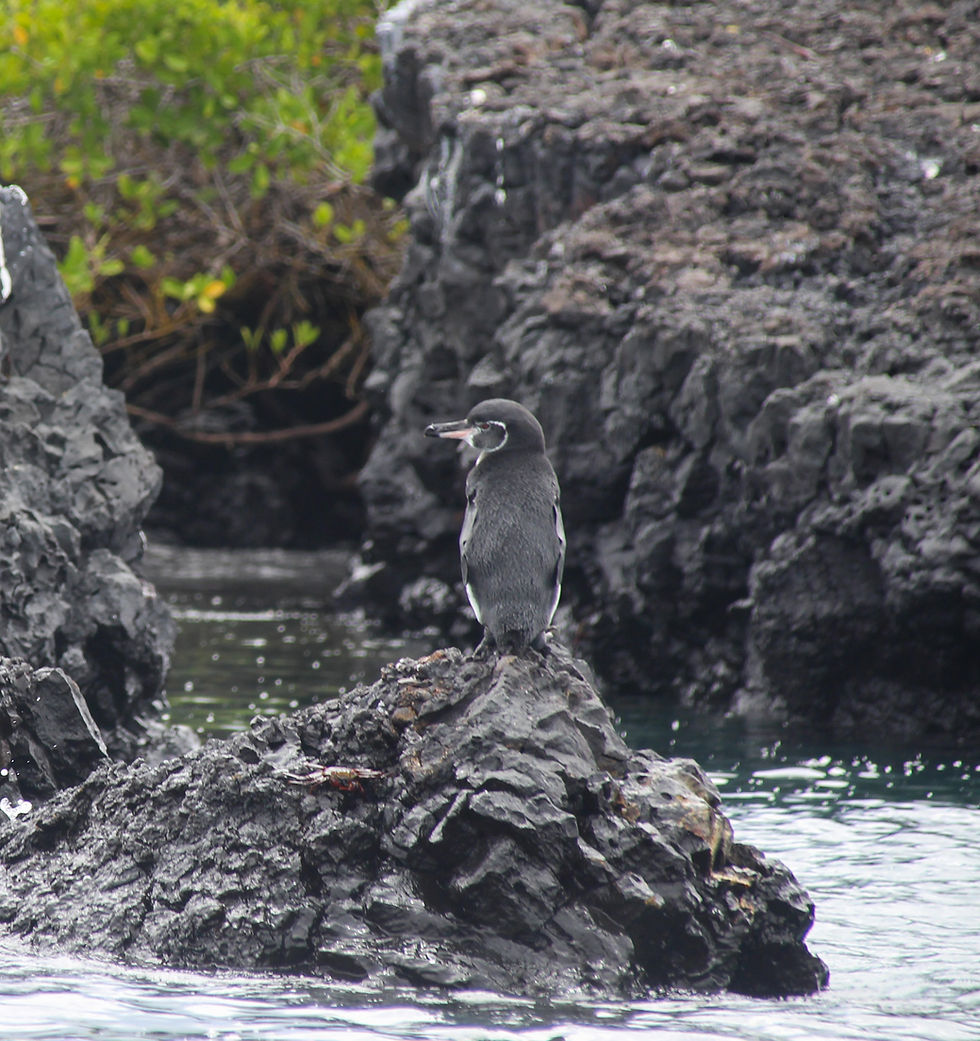
“Nothing can prepare you for the beauty of the Galápagos Islands... it would be a huge shame if plastic pollution makes survival more difficult for the beloved animals there" - Karly McMullen
“Nothing can prepare you for the beauty of the Galápagos Islands. It is such a unique place, and it would be a huge shame if plastic pollution makes survival more difficult for the beloved animals there,” Karly shares.
Microplastics find their way into the ocean through city runoffs and wastewater or are created when plastics in the environment break down into smaller pieces. Unfortunately, these plastic particles can make their way from continental cities to the most remote islands, including the Galápagos.
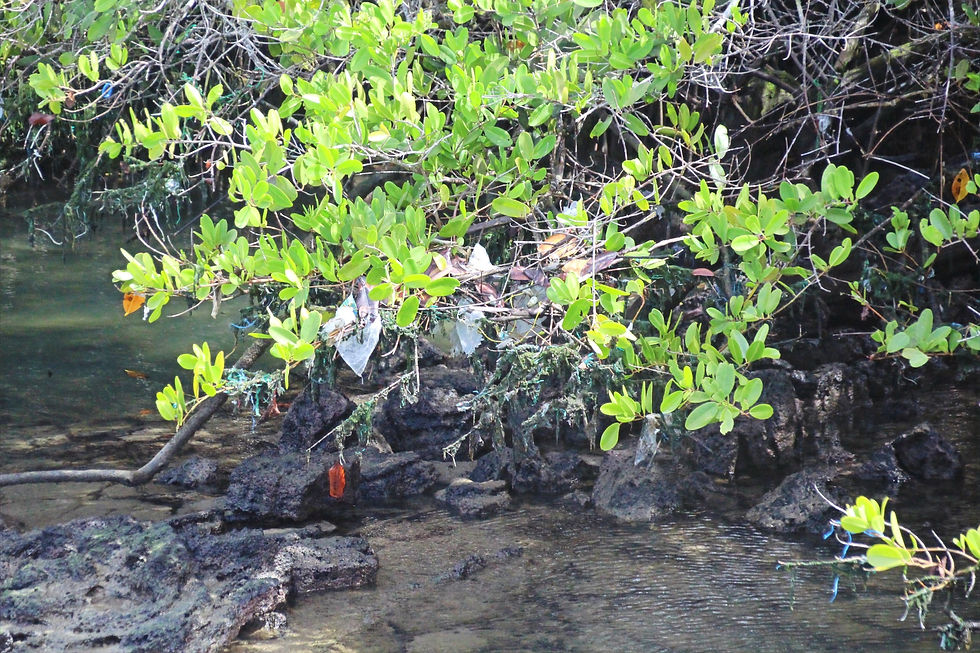
Microplastics are eaten by a variety of ocean animals, including fish, shellfish, mammals, seabirds and more which can have harmful effects on the species and their ecosystems.
To fight plastic pollution, researchers and policymakers need to know the amount of microplastics in the environment and the exposure levels for animals in the ecosystem to determine the risks to these creatures.
Balancing advocacy and research
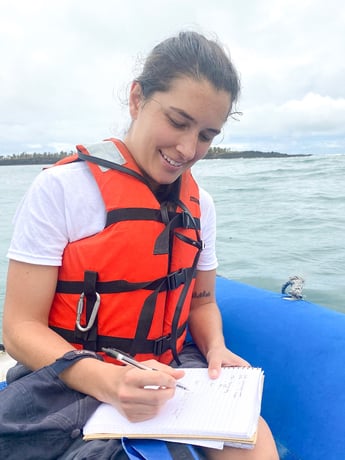
Having completed a bachelor's degree in Communications and Psychology and work terms at digital marketing and software organizations, Karly was driven to use her communication skills to better the planet. With deep respect and care for the ocean, she began a Master of Science degree at UBC studying microplastic pollution.
She pitched the idea of a Galápagos Islands expedition to study how microplastics may interfere with the Galápagos penguin’s survival and, to her delight, the proposal was accepted by Dr. Juan José Alava, Ecotoxicologist and Principal Investigator of the Ocean Pollution Research Unit (OPRU) at UBC.
“I come from a marketing background, so I am interested in translating the issue of microplastic pollution into a story that is relatable to the public..." - Karly McMullen
Karly explains why she chose the Galápagos penguin: “I come from a marketing background, so I am interested in translating the issue of microplastic pollution into a story that is relatable to the public. A great way to do that is to choose ocean stakeholders - animals that have captured public concern - and to assess how microplastics may impact them.”
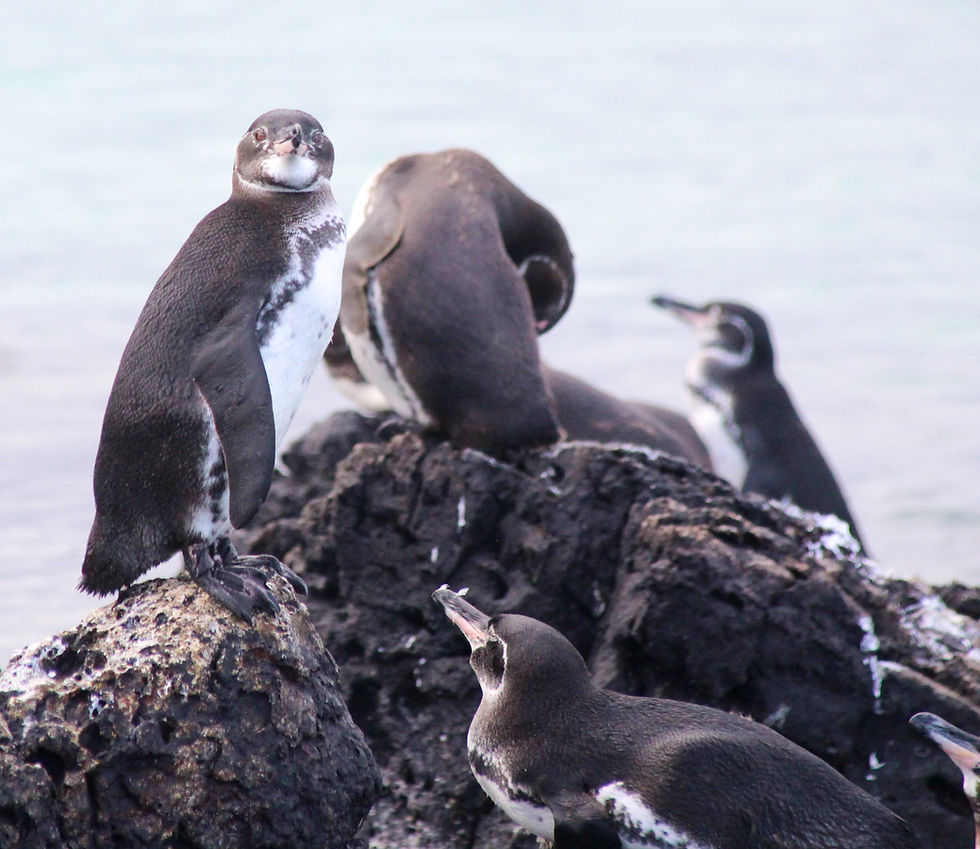
Despite being a quirky seabird, the Galápagos penguin is an apex predator in the Galápagos ecosystem, but unfortunately is listed as endangered with only 1,200 mature individuals left.
With guidance and permission from the Galápagos National Park, Karly, her supervisor, Dr. Alava, scolars from ESPOL Polytechnic University and Galápagos National Park officials spent two weeks boating to different islands and collecting samples.
“I am so grateful for this expedition and everyone who made it happen. To my surprise, we went through with the proposal I put forward. We were there to collect water samples, penguin fecal matter and penguin prey items to look for microplastics,” Karly explains.
Microplastics can be ingested by penguins when they eat fish and squid contaminated with plastics; however, it is still unclear if microplastics simply move through organisms when excreted. The team collected penguin scat to assess whether microplastics are present in the fecal matter.
“If microplastics are not readily eliminated, they could potentially build up in the animals’ stomach and may cause more harm,” Karly says.
“If microplastics are not readily eliminated, they could potentially build up in the animals’ stomach and may cause more harm,” Karly says.
Overcoming obstacles
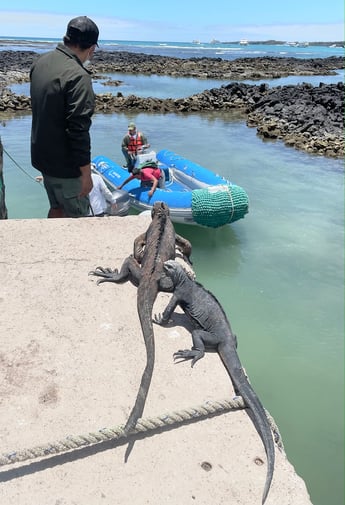
“This was my first field work and it was a true adventure. We were constantly thinking on our feet to solve problems. Each day we would make a plan, scurry past the thirty marine iguanas, sea lions or pelicans toward the boat launch and hop aboard a new boat to travel to a new sampling site. We had to change the plans many times, but that made it exciting!”
Karly overcame obstacles and solved problems to ensure rigorous science was conducted.
The team had to creatively source supplies on the remote islands and fought through seasickness and lost (and recovered) towing nets. They transported upwards of 70 litres of water to and from islands, spent hours filtering water samples and got up close and personal with the penguins.
Inspired by the compassionate community
While there, Karly was amazed by the care and compassion local community members had for the ocean.
“The community shared so much knowledge and ocean stewardship with me. I met with a group of young students who regularly collect plastic on the beach. They had interesting stories to share, like finding snails that used bottle caps as shells and were incredibly passionate about preserving Galápagos wildlife," Karly notes.
Karly was introduced to a group of students who are part of a larger organization, Cientificos De La Basura (“Garbage Scientists”). All around Latin America schools are collecting plastic pollution on beaches to protect the environment.
"The data is sitting there. Regulators can use this data to make policies that keep this plastic pollution off beaches, out of the environment and out of animals' stomachs...” - Karly McMullen
“They have jars and jars of plastic items from beach clean-ups. The data is sitting there. Regulators can use this data to make policies that keep this plastic pollution off beaches, out of the environment and out of animals' stomachs,” Karly explains.
Ocean Diagnostics Inc. is releasing a Community Science Tool Kit which will help community scientists collect plastic data that can be used by researchers and government.
“The work is being done,” Karly adds, “now we need to get that information to policy makers.”
Karly is currently processing samples in the UBC laboratory and will look to publish data later in the year, when her master’s is complete. Luckily, she’s been able to informally consult with experts at Ocean Diagnostics Inc. to ensure she takes the right quality control measures in her research.

Ocean Diagnostics Inc. is an environmental impact company that tackles planetary threats of microplastic pollution and biodiversity loss through innovative technology, cutting-edge laboratory capabilities, collaborative partnerships and community science. Founded by scientists and engineers, we break the barriers of collecting and analyzing scientific data to influence informed decision making.
